Here is a hive during the middle of winter here in southern Minnesota. We decided not to wrap (insulate) the hives this year because of the rather secluded location with good wind breaks. Bees do not heat the entire hive, like we heat our homes, but form a cluster in the center of the hive and keep the inner areas of the cluster at 92 degrees F all winter so they can continue to raise brood even in the coldest of months. It’s quite a fascinating process – the bees use themselves as insulation (the bees at the center of the cluster are the warmest, those in the middle much cooler, and those on the outside of the ball are just above freezing level).
Back to the fall, these were the hives just before winter’s start – you can see each has a few extra boxes on top of the main three – those are honey ‘supers’ that the bees just started to develop before the weather turned too cold for foraging. There isn’t a lot of preparation that you, as a beekeeper, have to do to get the bees ready for winter – they respond to the changes in weather and light by slowing egg laying/brood raising, puling honey stores down into the main hive, and forming the winter cluster. Winter is the quiet time for the beekeeper, with no maintenance needing to be done.
Some of the last flowers of summer – a honeybee is at the top and a bumblebee (with huge collections of pollen in the baskets of her back feet) on the bottom.
This is the queen excluder – a metal frame placed between the deep bodies of the main hive and the smaller honey super boxes on top. It is meant to keep the queen from coming into the upper boxes and laying eggs in the honey stores, but we didn’t have good luck with it. The bees themselves didn’t want to go through it, either.
A full frame of capped honey, ready for winter storage, from the main hive. This is not honey we take or use – it is just stores the bees made for themselves, but is really impressive to see! These frames are amazingly heavy!
We took one small frame of honey home to extract for ourselves. After removing the honey, we left it outside our house (far from the bee hives themselves) and some local bumblebees came and cleaned it for us. They do an incredible job, there’s no way we could clean it ourselves to anywhere as well as nature’s own clean-up crew.
We didn’t open the hives during the winter, but we checked on them monthly. This is a picture of the one open entrance of the hive one the top box. There were sluggish bees which could be spotted inside – bees leave the hive during the winter on very short flights to defecate and then dash right back in through this hole.
This is the other part of winter preparation – a metal mouse guard which keeps rodents from nesting in the bottom of the hive during the cold months. A bee hive is a really tempting wintering spot for a mouse – warm, full of food, and quite protected. The bees are up in their cluster and don’t patrol/monitor the whole hive during this time. A mouse can do a lot of damage, chewing up frames and eating comb and honey (as well as bees) if they are allowed inside. You can see someone was chewing on the cork here, too – probably a skunk or raccoon testing the hive.

 February 1st, 2013
February 1st, 2013  Foxfeather Ženková
Foxfeather Ženková 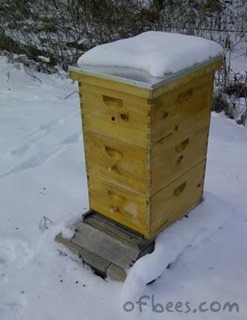
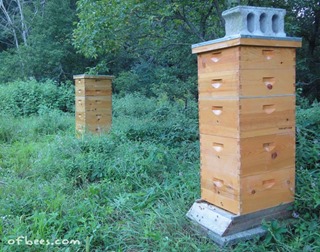
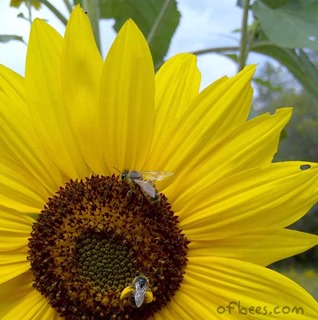
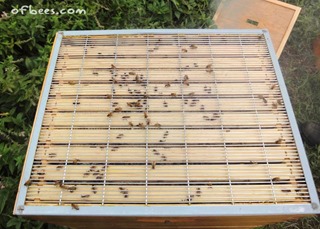
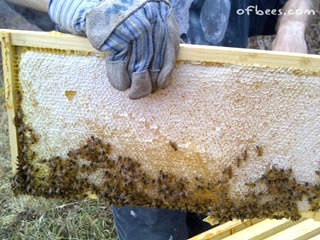
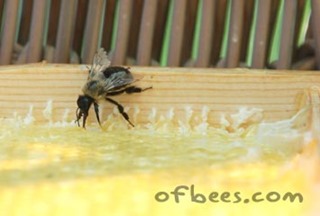

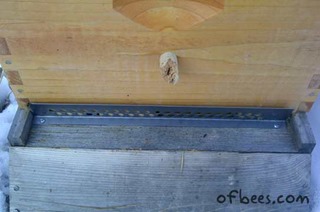
 Posted in
Posted in 
